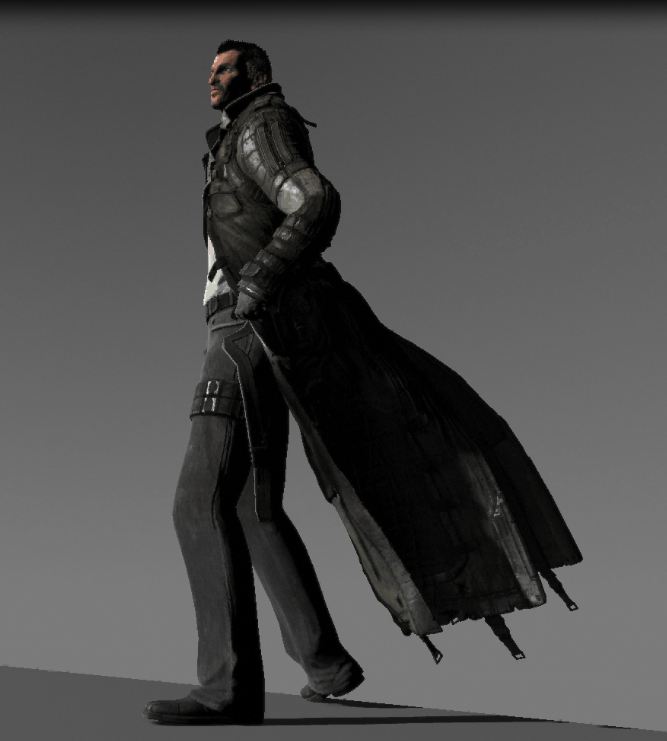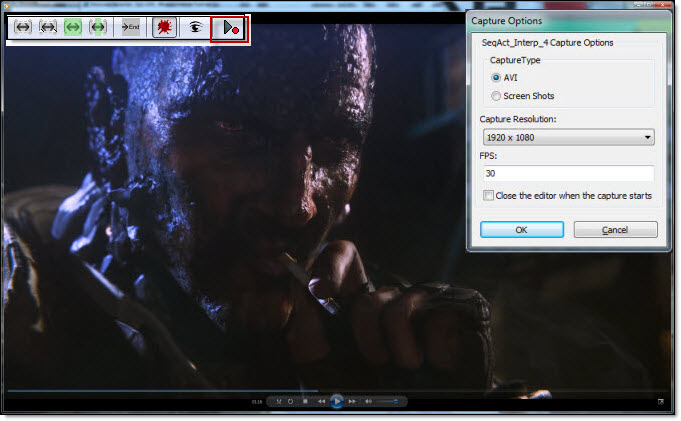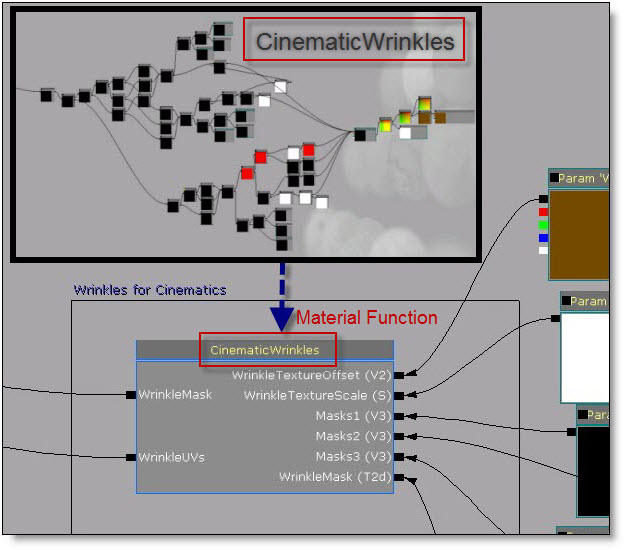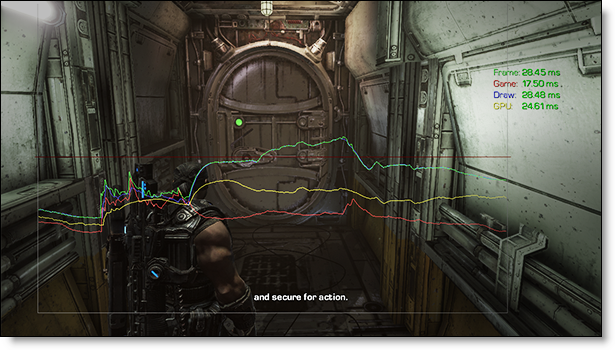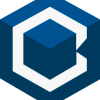Epic's new trailer shows off much of the technology upgrades covered in this article:
[media]
Community Resources
The Unreal Developer Network (UDN) is by far the most valuable resource for Unreal Engine developers, with its searchable database of thousands of pages of documentation.
Epic recently redesigned the UDK portal to make it easier to find tips on getting started, video tutorials, as well as UDK Gems, a vetted collection of real-world examples and practical applications for the Unreal Engine 3 toolset.
There are multiple channels Unreal Engine developers can use to connect with each other, such as the UDK forums, which include specialized sections for iOS development, programming and UnrealScript, level design, and much more.
Epic often sources the Works in Progress and Released Projects forums to find projects for its UDK Showcase success stories.
Developers can also join the UDK Developers and Unreal Engine Developers groups on LinkedIn, as well as the Unreal Engine Facebook page.
UDK Features: New and Improved
Check out in detail what's been added and upgraded in the latest UDK release. There is a complete list in the August UDK release.
Raised Royalty Threshold for UDK Developers
Epic raised the royalty-free revenue threshold for UDK commercial developers earlier this year.
Under the new license agreement, developers don't pay any royalties until their total revenue exceeds $50,000 (US). Beyond that, developers keep 75 percent of each dollar they receive and Epic receives 25 percent.
The first step to taking a UDK game commercial is to pay a $99 (US) fee at www.udk.com when it's time to start realizing financial benefit. The one-time license fee applies to an entire studio for an unlimited number of games and apps across multiple platforms.
Below are real-life examples that assume the fee of $99 has been paid and that the digital store keeps 30 percent of gross revenue. Epic takes a percentage of the portion of the revenue that developers receive. In retail terms, this would be known as the "wholesale" amount as opposed to the "retail" amount.
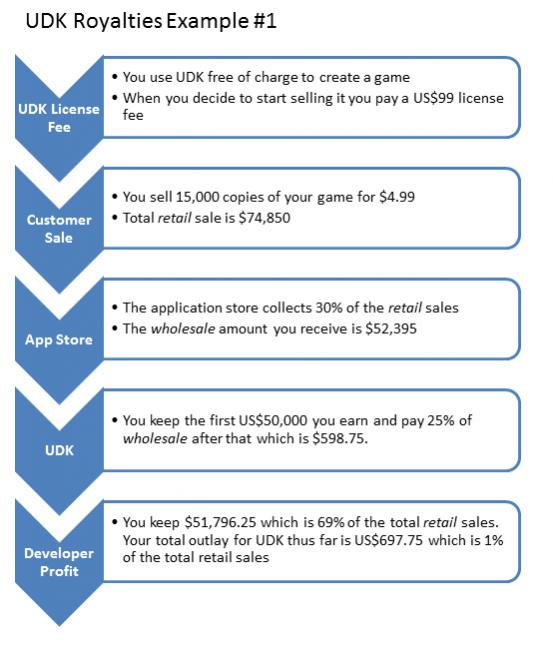
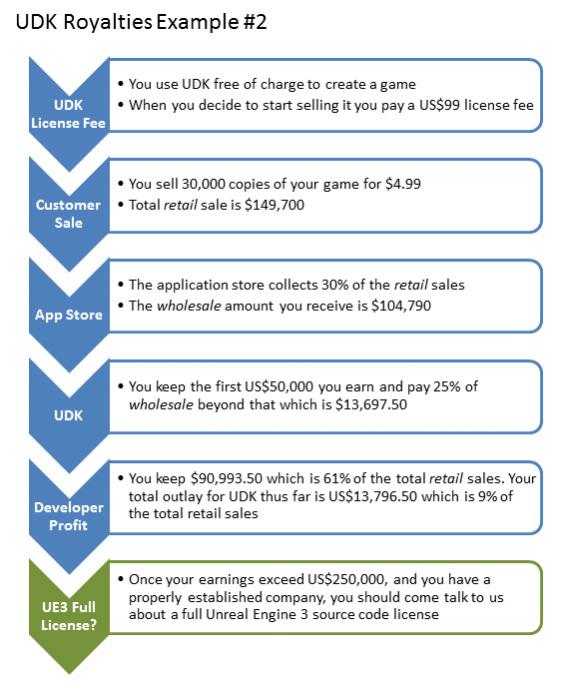
Having such a large royalty threshold makes it possible for developers to use UDK to establish themselves financially, keep overhead low and leverage the latest game engine technology.
Epic is always willing to speak with developers who are in need of a custom deal or wish to discuss full source terms.
iOS Support
In December 2010, Epic launched UDK with iOS support in conjunction with the launch of its award-winning game "Infinity Blade" for iOS. This made it possible for all developers to build their own iOS games and applications using the same technology that Steve Jobs highlighted and called "remarkable" at the Apple Special Event keynote introducing the iPhone 4. UDK enables anyone to build levels, visually script gameplay events and add visual effects for mobile applications using the Unreal Editor and its fully integrated suite of systems, including Unreal Kismet, Unreal Cascade, Unreal Matinee and Unreal Lightmass.
Included with UDK's iOS support are handy tools such as UDK Remote, which enables iOS devices to serve as wireless controllers with full touch and tilt functionality for PC testing. The UDK mobile previewer enables an instant local preview with simulated mobile input, and the new Unreal Frontend system compiles scripts and deploys builds for multiple platforms with the simple click of a button. UDK's highly optimized mobile renderer supports per-pixel lighting, environment mapping, precomputed visibility and much more.
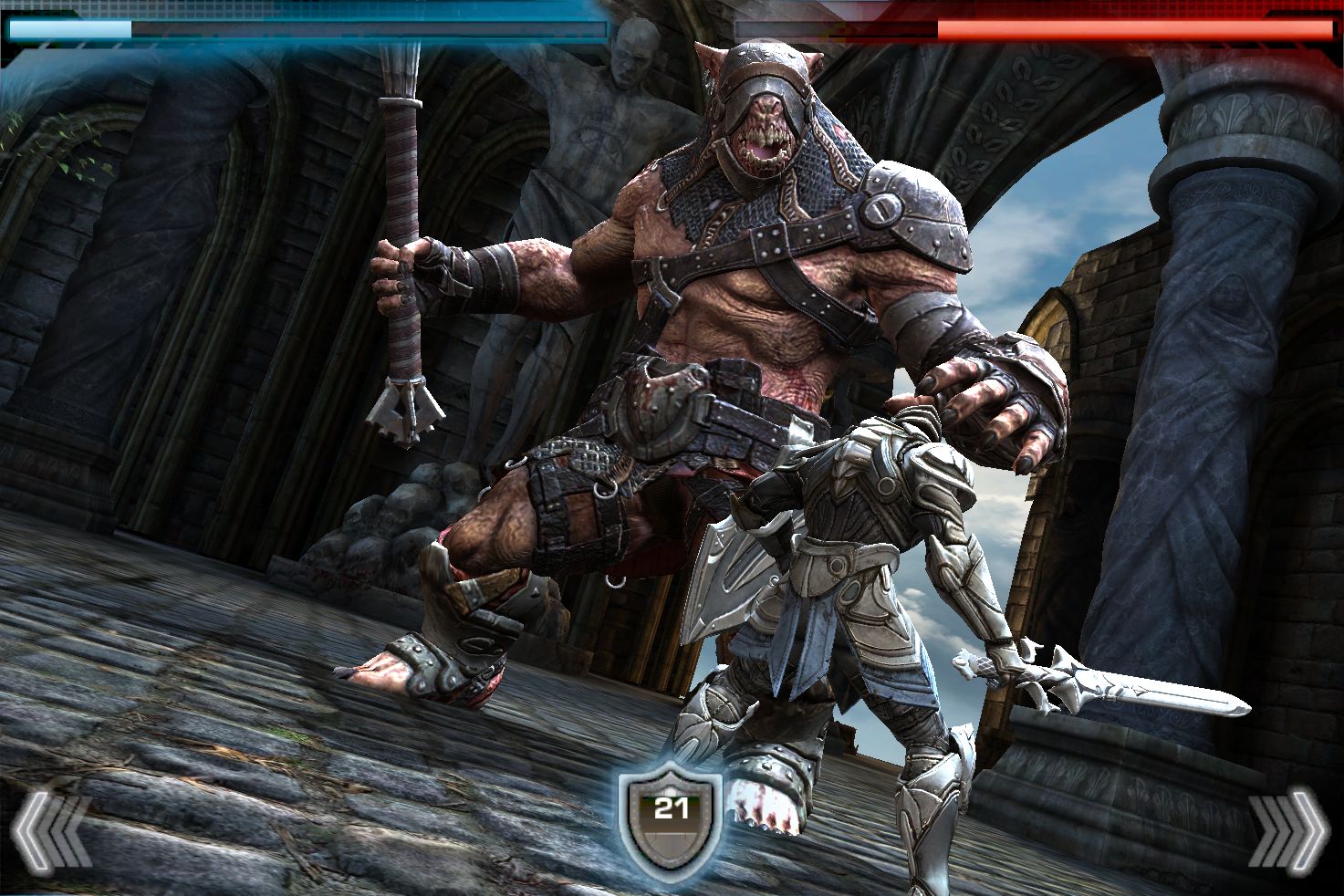
Infinity Blade for iOS devices
NVIDIA PhysX is supported in UDK's iOS development environment, and this makes it possible to create realistic physics-powered gameplay, simulations and dynamic effects for mobile devices.
UDK iOS also supports gamma correction, which enables the creation of levels and content with consistent lighting across platforms.
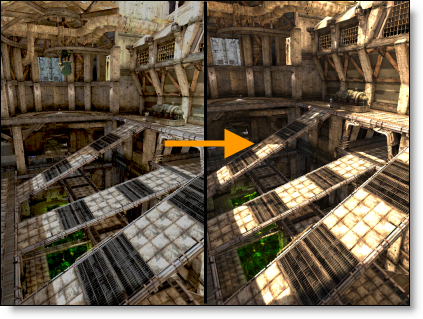
UDK iOS image gamma-corrected to match PC
Because gamma correction on mobile devices can cause a fairly noticeable impact on performance, it is mainly meant as a feature for use on iPad 2 and future mobile devices.
In addition, UDK now has one unified executable and game content tree for creating PC and mobile games. Developers can preview PC levels with mobile features instantly with a simple tool bar toggle.
DirectX 11 Technology
At this year's Game Developers Conference, attendees were wowed by Epic Games' Samaritan presentation, a sneak peak at the amazing visual fidelity achievable with Unreal Engine 3. Offering the world a first look at a real-time demonstration constructed entirely in DirectX 11, Samaritan sent shockwaves through the industry.
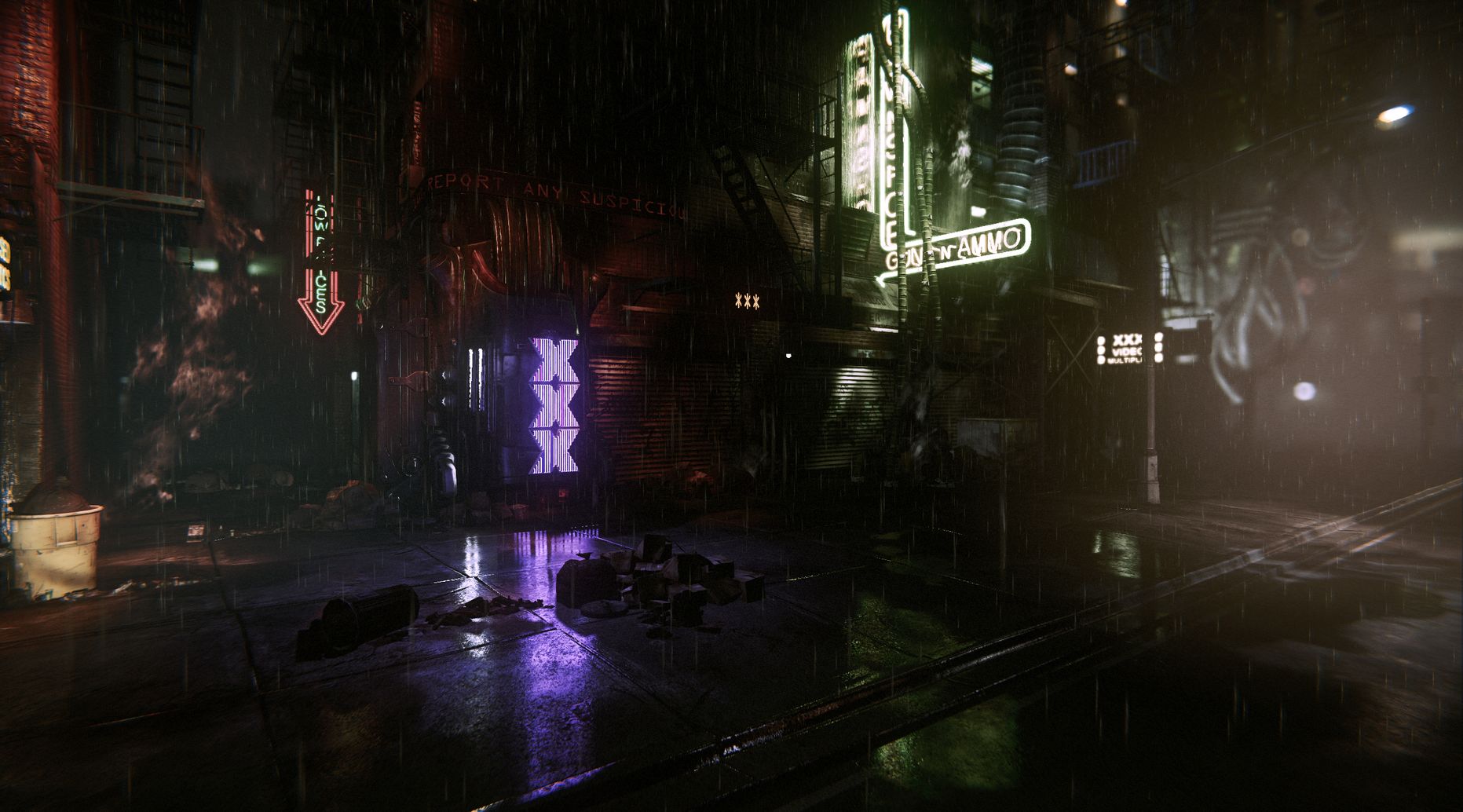
Billboard reflections in Epic's Samaritan real-time demo
UDK immediately began shipping with the DirectX 11 technology that powers Epic's Samaritan demo. As Epic Games CEO and Technical Director Tim Sweeney points out, "all of these techniques can be readily adopted in PC games today," but more excitingly, they are readily available for anyone to use, regardless of their budget or past experience through UDK.
When asked why Epic adopts such a stance, when others restrict technology to their own studios until the launch of a particular product, Sweeney states that, "given the incredible pace of progress in the industry, software releases cannot afford to be a once-every-few-years phenomenon akin to Windows OS releases. Software must be treated as a living product, continually evolving and always available." As such, Sweeney "wants to share Epic's latest and greatest stuff with the world." Making his point clear, he says, "from Unreal Engine 3 licensees building triple-A titles, to the UDK developer community, to students learning development at universities, everyone can get their hands on this stuff and check it out."
UDK leverages DirectX features such as tessellation and displacement, geometry shaders, multisampled textures and Shader Model 5.
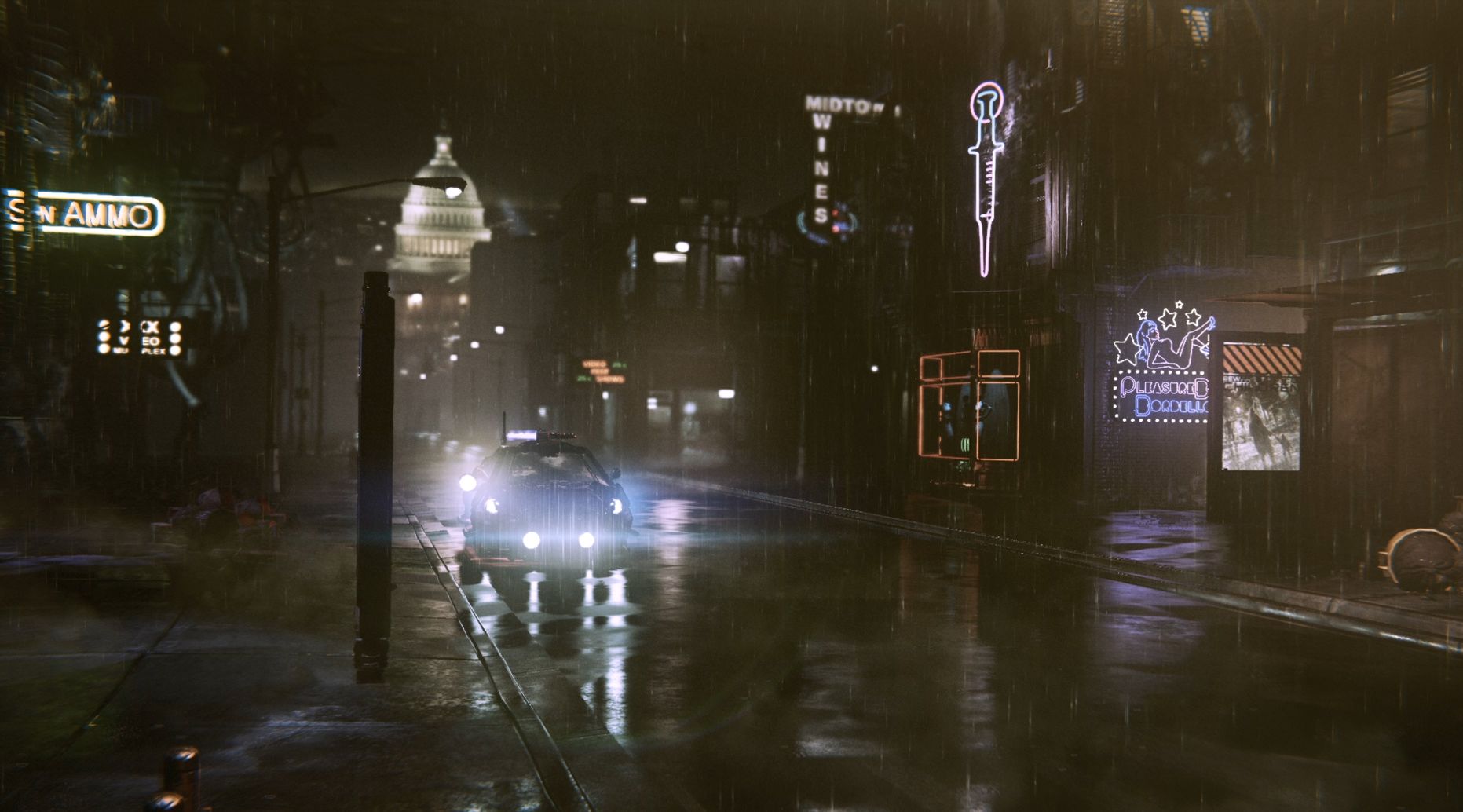
Shadowed point light reflections in Samaritan
High-end rendering technology includes:
- Image-based reflections that allow surfaces of any shape to reflect an approximate version of scenes, with varying glossiness across surfaces, anisotropic HDR highlights and anti-aliasing;
- Subsurface scattering (SSS) that simulates the light that scatters inside semi-translucent materials, making character skin come alive;
- Anti-aliased masked materials that super sample the edges of masked and alpha-tested materials, making character hair more look realistic than ever before;
- Deferred rendering with MSAA support;
- Bokeh depth of field providing close to film-quality DOF, with artist-controllable Bokeh; and
- High-quality dynamic shadows from many lights on the environment, such as shadows for point lights.
In addition, FXAA and MLAA post-processing methods have been integrated into UDK.
Post-process anti-aliasing is supported for DirectX 9 and DirectX 11.
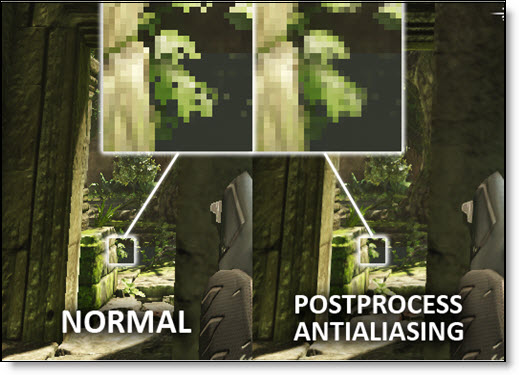
Post-process anti-aliasing turned off vs. activated in UDK.
NVIDIA APEX
UDK is fully integrated with NVIDIA APEX, a high-level scalable framework oriented on the creation of complex physical effects, such as destructible environments and dynamic character clothing.
Samaritan utilizes APEX physics, most notably for the movement
of the main character's coat, which flaps when in motion.
Unreal Landscape
Developed by Epic Games Korea to meet the high standards of leading MMO licensees, Unreal Landscape supports huge terrains with long draw distances, and it also has great streaming support. Utilizing geo-mipmapping and texture mipmaps, Landscape morphs between vertex positions in the vertex shader to avoid seams, resulting in smooth LOD transitions.
Artists can add detailed normal maps over topography and customize the look of terrain with height painting, smoothing, flattening, fill, hydraulic and thermal erosion tools. Layers in Unreal Landscape correspond to layer blend nodes set up in the Unreal Material Editor, and each layer can be assigned a physical material, such as grass, rock, snow or sand. Unreal Landscape also supports decals, which makes it possible to add dynamic effects such as tire tracks or footsteps to surfaces.
A new Landscape copy and paste mode enables users to replicate regions of terrain with ease. Artists can copy layer height, weight and other properties, e.g., translate all the characteristics of one mountain top to another. Landscape gizmos can be arbitrarily positioned, rotated and resized.
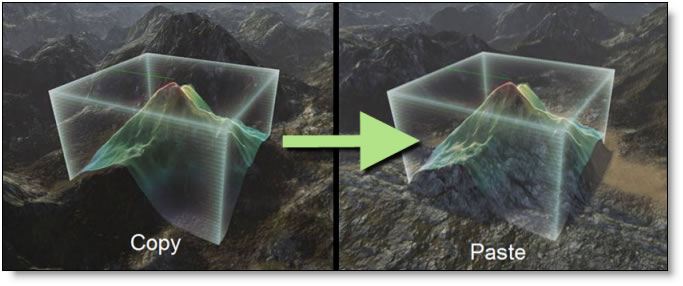
New Unreal Landscape gizmo lets artist copy and paste regions of terrain.
In addition, Wacom tablet support is available for mesh painting, and a history tab enables users to undo and recreate actions.
New Foliage Editor
UDK also has a new foliage system that allows artists and level designers to quickly and efficiently add a variety of detail meshes such as plant life to levels.
Mesh painting can be performed anywhere in a level. Developers can choose the number of instances in an area, change the scale and paint on vegetation as desired.
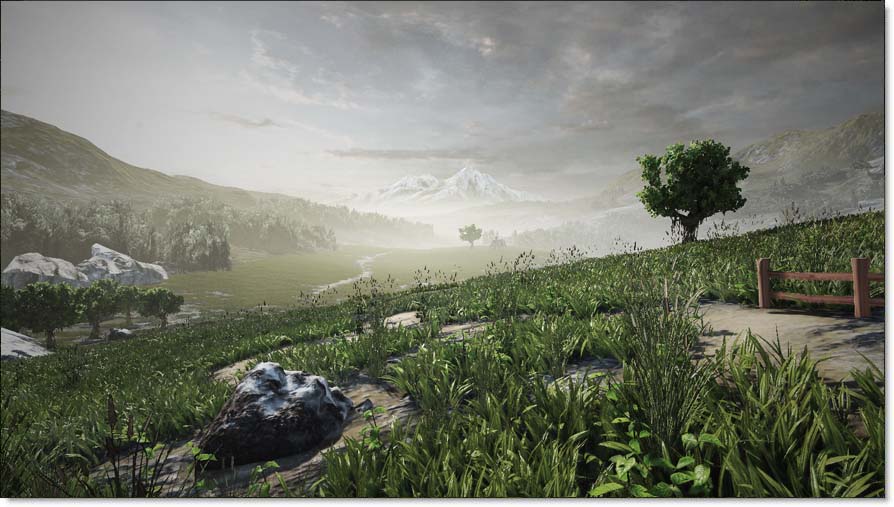
A sample scene created using UDK's new foliage editor.
The foliage system can produce a large number of instances in a single draw call, as the amount of data sent from the CPU to the graphics card is extremely small. Artists can specify a Landscape layer and use that layer's weight to affect foliage density.
Unreal Matinee Video Capture
UDK ships with a new integrated Unreal Matinee and game movie capture feature.
Matinees can be captured to AVI via a new button on the Unreal Matinee toolbar.
Movie capture in action with Samaritan
A running game can be captured to AVI with simple console commands.
Soft-Edge Motion Blur and Motion Blur Skinning
In traditional film cameras, the shutter remains open for an extended period of time when an image is taken to capture more light. Moving objects appear blurred along their movement direction. The Unreal Engine's motion blur is based on a post-processing effect that blurs image content by averaging multiple texture samples. Blurring outside of the object as seen in film images is possible but requires extra effort. Epic's solution for the problem is soft-edge motion blur.
Using the soft-edge feature further improves the quality of the motion blur to become a more filmic effect.
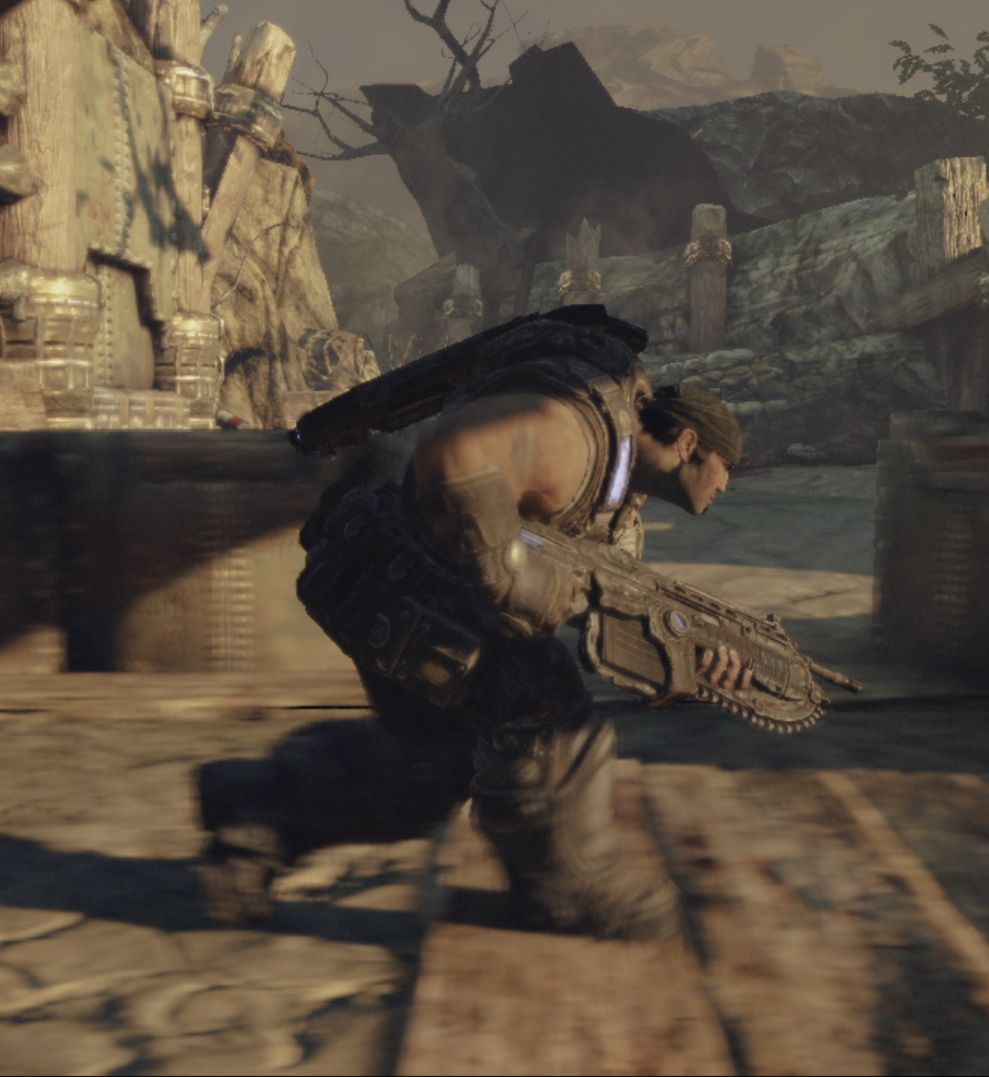
Body parts moving in different directions show different motion blur direction and strength.
Motion blur skinning layers individual levels of motion blur onto different parts of a character's body. The motion blur skinning post-process feature increases the perception of movement on characters.
In addition, developers can utilize new features such as HDR scale and film grain.
Simplygon Skeletal and Static Mesh Reduction
The Unreal Engine now ships with Simplygon static and skeletal mesh reduction technology. Donya Labs recently integrated Simplygon with Unreal Engine 3, and its high-quality mesh reduction features are accessible via the Unreal Editor.
UDK developers may use Simplygon's integrated features for all projects, commercial and non-commercial, at no additional cost.
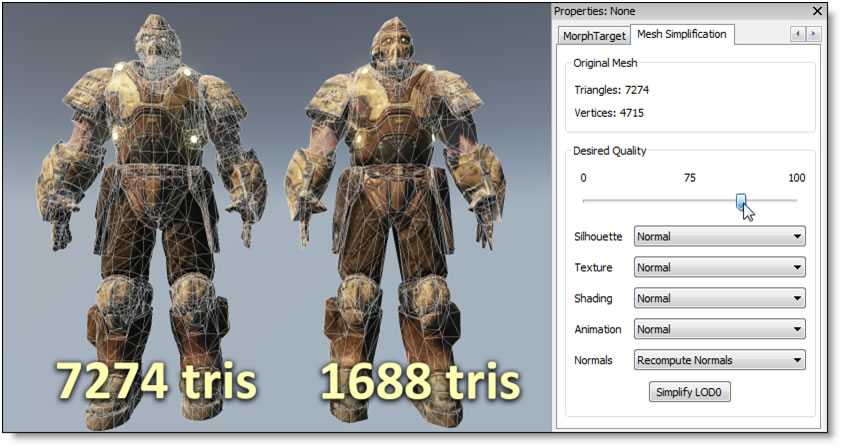
The results of UDK's Simplygon mesh reduction in the Unreal Editor.
This integration enables artists and level designers to quickly simplify meshes, generate LODs, and immediately see the results in their maps. Simplygon saves developers hundreds to thousands of hours of manual art adjustment, and it is especially handy for converting high-end PC assets for deployment on mobile devices.
Material Functions
Material functions allow snippets of material graphs to be saved separately and be shared between multiple materials.
New material functions can reduce material redundancy.
Many new material functions have been added to the engine's function library, which exposes functions in a new categorized window in the material editor.
Map Lighting Templates
Artists and level designers can take advantage of UDK's brand new, fully customizable map lighting templates.
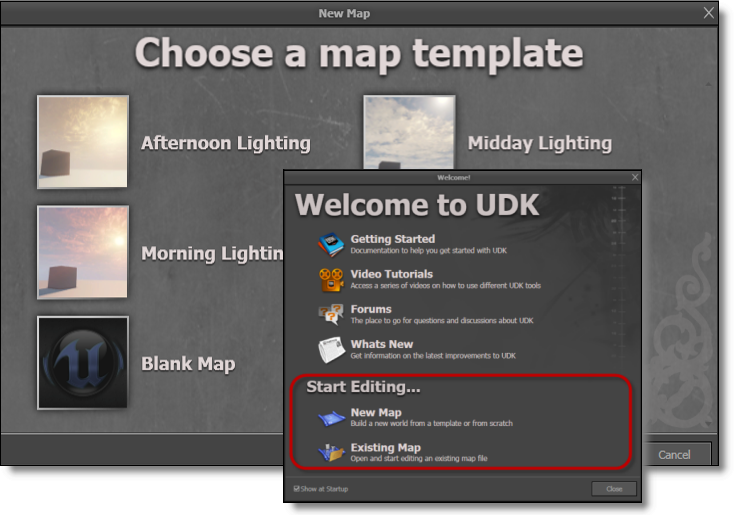
Customizable UDK templates for easy map lighting.
Simply drag the appropriate thumbnail from the Unreal Content Browser into a level to populate settings for day, night, dawn or sunset lighting effects.
Unreal Kismet Debugger
Developers can work more efficiently than ever before with the popular Unreal Kismet visual scripting system, which makes it possible to rapidly prototype concepts and gameplay mechanics.
UDK now ships with the first ever Kismet debugger, so it is now possible to visualize Kismet node activation, set breakpoints that pause execution when nodes are activated, and step through sequences while running PIE.
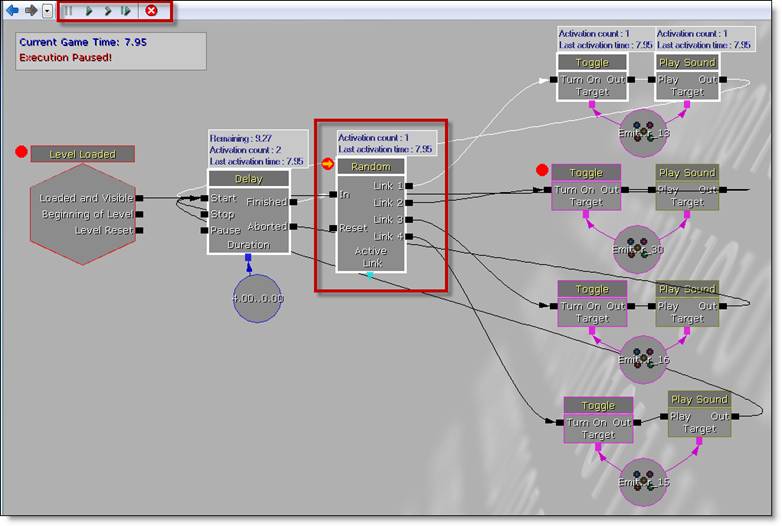
Unreal Kismet debugger with breakpoints
With the Kismet debugger, developers can visualize the flow of a Kismet sequence while their game is running; debug issues where nodes are being activated in the wrong order, not at the right time, not at all or too much; and step through sequences one frame at a time and set breakpoints.
Major Performance Optimizations
UDK benefits from major performance and memory optimizations that were built into Unreal Engine 3 for shipping "Gears of War 3."
Gameplay stats visualized in "Gears of War 3"
UDK provides easy in-game visualization of performance data, making problem areas easy to detect during play. Plus, the enhanced gameplay profiler displays color-coded data captured during profiling sessions, enabling developers to dig deeper into gameplay code to analyze time spent performing functions.
Multithreaded cooking is now supported, yielding approximately 4x faster cooks. Improvements have been made to rendering, CPU and GPU performance, memory usage, and overall quality and consistency.
Anyone can check out the Unreal Engine tools for free at www.udk.com/download.
